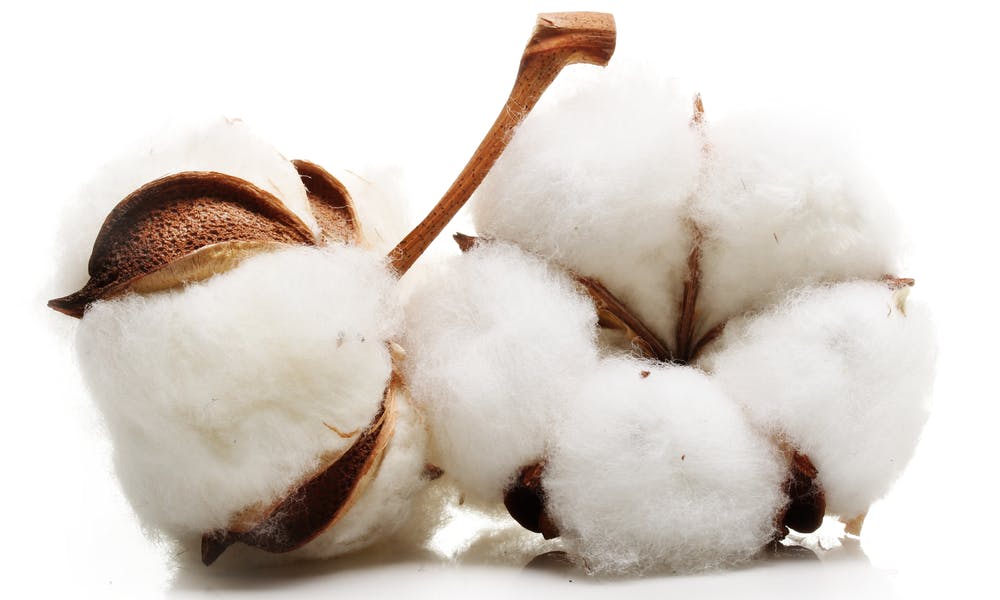MENU
The Cotton Flower – The Fluffy Plant

Gardening has never been so fun before the cotton flower. Everybody who owns a garden, or likes gardening on a regular basis, should try to grow this fluffy perennial at least once. With fluffy staple fibers in your gardens, they surely provide a nice topic for conversation, and with a long, deep-seated role in our history, we surely have a lot to talk about. In this article, we learn:
* Characteristics of the cotton flower
* Origin of the cotton flower
* How to grow cotton flowers
* Diseases and insects
* History and uses of the cotton flower
Characteristics of The Cotton Flower
This beautiful flower has petals of a white color, cream tinted, as well a yellow, when the flower opens up and has a broad tip that shrinks, narrowing down to the base. Their color darkens in the first 24 hours, commonly to a dark pink shade.
With three bracts that commonly close surrounding the square, and with a calyx surrounding the bud, these two parts act as protection for the flower. The center also has a five-lobed pistil, with multiple stamens surrounding it, and each of the stamens features two pollen-releasing anthers. The pollen grains are serviceable for 12 hours after their release.
The flower also features a superior ovary, which is made up of two locules, and maybe more in some cases. Locules are the chambers in which the seeds reside and each species of cotton flower has different numbers of locules, ranging from eight to 12 ovules. From this, the number of mature seed chambers ranges from five to nine.
The fibers that protect the seeds are almost entirely made of cellulose, and the cotton bolls act as a dispersal mechanism for the seeds. They are part of the genus Gossypium, within the Malvaceae family.
Origin of The Cotton Flower
This small bush, or shrub, originates from regions that are subtropical or tropical. The cotton flower is found in many regions, such as India, Africa, Egypt, and America. Mexico is the region where there is the single greatest diversity among wild cotton species and closely followed by Africa and Australia. Also, the cotton flower’s domestication can be traced back to the Old and New Worlds.
How to Grow Cotton Flowers?
With their beautiful, yellow flowers that usually blossom after 45 days of planting, and with bolls that harbor fluffy cotton, these flowers are a great addition to your garden. The cotton flowers require large containers, 12 inches in diameter at the very least, and they can be grown either indoors, or outdoors on a deck or patio.
The seeds from which they sprout can be seeded outdoors, in your garden, or indoors, allowing them to grow a little, and then transplanting them back into your garden. The soil should be warm before you attempt to seed the cotton flower.
Their seeds are very sensitive to cold temperatures, especially frosts, so an early seeding indoors is the most advised solution. Sow the seeds a month before your last frost day in your region, covering it with a little seed starting soil.
The transplanting of your seedlings should be done after the weather reaches 65 degrees Fahrenheit. Their germination occurs in around seven to 14 days, and the plants should be spaced apart at least 12 to 15 inches from each other.
They require full sun, as well as a soil rich in nutrients and moisture that can also drain well. The cotton is also a plant that requires plenty of feeding, so it’s advisable to add a lot of compost and manure to your soil before planting, as well as frequently adding potassium-rich fertilizer.
Diseases and Insects
These plants are very susceptible to diseases, as well as insects, so it’s advisable to frequently protect your crop. The boll weevils are insects that commonly attack this plant, so spray some insecticides on a regular basis.
The cotton plant can also be subject to diseases that reside in the soil over winter. To keep the disease at bay, frequently rotate your crops, and use a general-purpose fungicide, especially in humid areas, to remedy the problems that arise.
History and Uses of the Cotton Plant
The cotton plant has been used for centuries for different purposes. Today, they are mostly used in textile products such as terrycloth for towels and robes, providing great absorbent properties, as well as denim for blue jeans, cambric and more. They are also used in creating blue work shirts, corduroy, twill, and seersucker.
The oldest recorded evidence of use for cotton dates back to 5500 BC, in the Old World. There were also cotton bolls found in Tehuacana, Mexico, residing in a cave and dating back to the 5500 BC but this date is questionable. More reliable dates are 3400 and 2300 BC with references to the domestication of the Gossypium hirsutum.
There are traces and discoveries of the cotton flower all around the world, from South Africa to the Greeks and Arabs, dating back to the Wars of Alexander the Great, as well as Iran and China. Cotton has deep roots around the globe, being used in the Middle Ages in the Eastern world, as well as Europe, Egypt but also Britain.
In Britain, the East India Company was credited to the introduction of cotton in Britain, popularizing calico and chintz that were cheap and colorful cloths, and this eventually overtook the value of their spice trading in the 17th century.
Amazingly, cotton can be found on the far side of the Moon. China brought cotton seeds aboard the Chang’e 4, on the 15th of January 2019. The seed sprouted, and it has been called the first “truly otherworldly plant in history.”
To sum up, the cotton flower is planted all over the world, and recently, even on the Moon. It has deep roots in many ancient civilizations and cultures, as well as a plethora of uses in the modern world.

